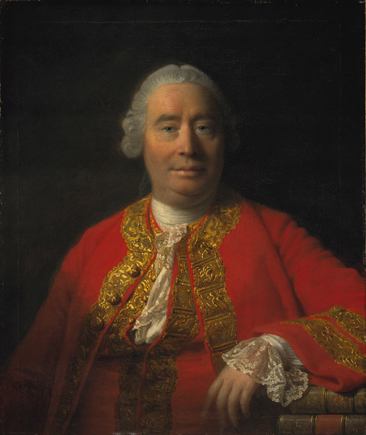Today is the feast day of St Andrew, patron saint of Scotland. So this week’s appropriately Caledonian choice of picture is a likeness of Scotland’s most distinguished philosopher painted by the greatest Scottish artist of the eighteenth-century: Allan Ramsay’s portrait of David Hume.
The work can be seen at the Scottish National Portrait Gallery in Edinburgh where it still hangs, as it once did in Hume’s house, alongside the artist’s matching portrait of the French philosophe Jean-Jacques Rousseau. Rousseau and Hume had become firm friends in Paris and when the Frenchman travelled to London, seeking refuge from both real and imagined persecutors, Hume acted as his protector, attempting to secure a pension for him from King George III. But their relationship soured when the increasingly paranoid French writer saw the two portraits of himself and Hume by Ramsay. Intended as a memorial of the sympathy that existed between the two men, they were interpreted rather differently by Rousseau, who decided that they were instead an attempt to blacken his reputation while enhancing that of Hume.
Ramsay had made Rousseau seem, as indeed he was, more mercurial and than his Scottish protector, shrouding him in romantically Rembrandtesque shadow and having him shoot a sharp sideways glance at the spectator. Ridicule was no part of the painter’s intention, but Rousseau came to the conclusion that he had been deliberately posed “in a dark spot” and made to look ugly (“Cyclopean” in his phrase) while Hume had been made to seem all sweetness and light. A nasty and very public quarrel ensued, and while Rousseau was plainly deluding himself there was perhaps a tiny element of truth swirling around somewhere in the outpourings of his persecution mania. The widely read and philosophically inclined Ramsay was more in sympathy with the ideas...


